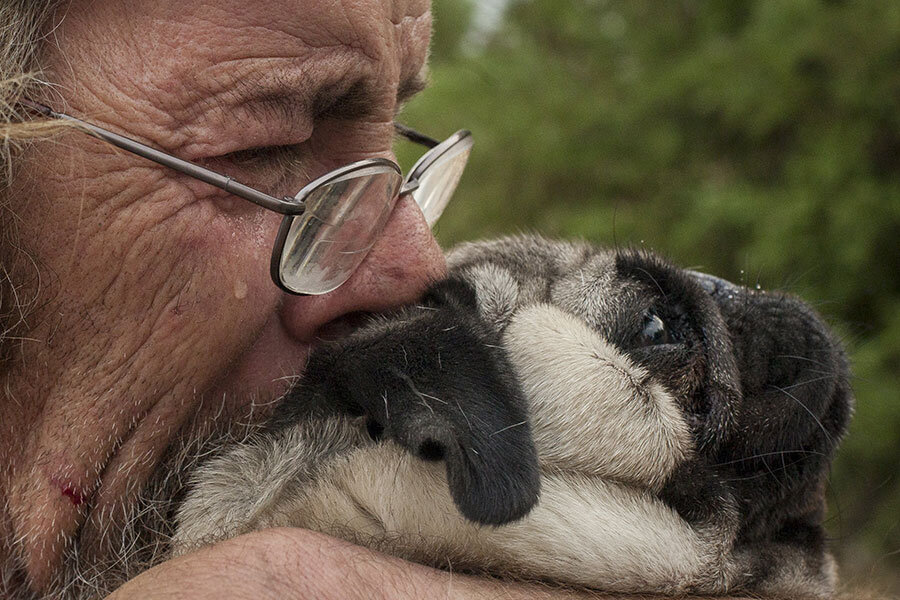Amid destruction of California's Valley Fire, moments of deep gratitude
Loading...
| Los Angeles
Former Marine Greg Candlario and his family are new to northern California, but in the three months they have lived here, they have witnessed nearly a half dozen major fires creep closer to their property.
This time, the fires ravaged 85 percent of their 350-acre Napa Valley ranch, destroyed water lines to their vineyard, and killed at least four of their alpaca herd.
But Mr. Candlario says he feels blessed because the flames spared his home. “Everything as far as you can see is covered in white ash, just like a scene out of that TV show 'The Walking Dead,' ” he says. “But at least the house is here.”
Candlario is one of the fortunate among the 23,000 residents who have been forced to flee their homes, racing ahead of a fire called “unprecedented” in both speed and destructive capacity by Cal Fire battalion chief Scott McLean. As of noon Monday local time, the Valley fire was still spreading west, east, north and south, had burned some 60,000 acres, and was no more than 5 percent contained.
The community of Middletown (pop. 1,500) is one of the hardest hit, with new emergency centers opening to meet demand. The Napa Valley Fairgrounds are home to about 500 displaced locals, while the Middletown High School has taken over from the local Presbyterian church as numbers have swelled.
Candlario says he and his family had almost no time – a refrain repeated constantly around the Napa Valley. “What makes this fire so dangerous is how quickly it moves,” says Mr. McLean. Embers are lighting fires as far away as a half mile ahead. “Most of the small fires that keep springing up are from these embers.”
The fire first burst out Saturday, and Gov. Jerry Brown has declared a state of emergency. More than 1,000 firefighters in the region are fighting multiple fires. There has been one unconfirmed death, with at least four injured firefighters being evacuated to the University of California at Davis for treatment of second-degree burns.
Residents have nothing but praise for the firefighters.
“The Sacramento Fire Department stopped the flames, like 200 feet from my house,” says Candlario.
He and his mother and father had been forced to leave with almost no preparation after the fire kicked up Saturday night. “We put everything we could in the car,” he says. But they couldn’t handle the animals with such short notice, so they opened the pens and let the horses and alpaca herd loose.
When he was allowed to return Sunday night, Candlario discovered, to his surprise and deep admiration, that the firemen had rounded up the livestock and fetched hay to feed them.
The ranch currently has no power, says Candlario, speaking on his cellphone, which he charges from his car.
In such moments, small triumphs can bring profound joy, he says. When they departed in a rush, they had been unable to fit their large St. Bernard, Stinky, in the car. “He followed us for a few miles, then we had to speed away and we lost him,” Candlario recalls.
He had tweeted a social media plea for neighbors to watch out for the dog but was overjoyed to find upon his return that Stinky was waiting at the ranch house.
“There he was,” says Candlario. “I can only imagine what he had to go through to find his way back during that fire.”
Candlario's experience speaks to how residents in the West will have to learn to prepare themselves better as drought and extreme weather fuel fires.
“The best advice I can give people is to practice your evacuation route and take evacuation orders seriously,” says Al Berman, president of DRI International, a nonprofit that focuses on emergency management. Advance preparation for the possibility of emergency evacuation, he says, is more important than ever.







